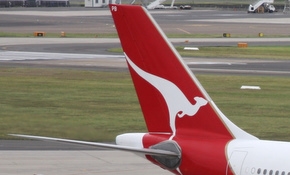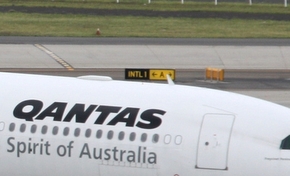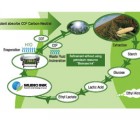
TMA Australia picked up the airline’s print management contract last week, claiming that it would “deliver savings on print in excess of 25%”.
Both TMA and Qantas subsequently added that the deal stipulated “100% onshore produced printing”, despite the fact the tender document included criteria asking about suppliers’ “ability to source items from low-cost countries”.
Former and current Qantas print suppliers contacted by ProPrint were sceptical about TMA’s ability to deliver 25% reductions without suppliers being forced to produce the work below cost.
One printer who has supplied Qantas for 15 years told ProPrint it was recently asked to submit a trial quote and, despite quoting prices that were “even more competitive than usual”, was eventually told that the bid was unsuccessful.
“They wanted us to drop 25% off our margins,” said the printer.
The same printer estimated a 10-15% reduction in margin was probably the maximum amount that most printers could sustain.
“If they deal directly they might get that, but certainly not with a middleman,” he said.
“With all the dramas Qantas will probably have over the next 12 months, they may even come back to us.”
On Demand Printing managing director Bruce Peddlesden, another former Qantas supplier, was also sceptical TMA could deliver 25% without going offshore.
“I don’t believe they can, but I’ve been proved wrong before,” he said.
“I’ll say good luck to them, but I think they’ve got a big task now to deliver on that promise.”
Another former Qantas supplier expressed concern that the industry was again being asked to ‘race to the bottom’ to get work.
“A lot of people out there are cutting rates, and some are even going to the wall doing so,” he said.
“Margins are tight enough, I don’t know anyone who is ripping their clients off with a 25% margin.”
Another printer suggested the only way Qantas could reduce its print spend by 25%, short of sending work offshore, would be to “rationalise” its order volumes.
“Maybe if they look at the way they do business, maybe by multi-using bits of paper or taking some forms from three pages down to one. Maybe some documents don’t have to be printed, they could do them electronically,” he told ProPrint.
“But no printer in Australia is making 25% margin on these jobs.”
Meanwhile, Printing Industries has launched a ‘Print In Australia’ campaign, which will ‘name and shame’ companies and government agencies that source printed work from offshore.
Hagop Tchamkertenian, national manager for policy and government affairs at Printing Industries, told ProPrint the campaign was primarily aimed at encouraging those organisations to consider local suppliers before sending work overseas.
Tchamkertenian said that while offshoring had always been a subject of concern for its members, the Qantas tender controversy “brought the issue home” for the association.
“It should be left to the print supplier to determine whether printing work should be done on or offshore. The tender documents should not advise or guide them in that direction,” he said.
Click here for the latest headlines from across the printing industry.
Comment below to have your say on this story.
If you have a news story or tip-off, get in touch at editorial@sprinter.com.au.
Sign up to the Sprinter newsletter


